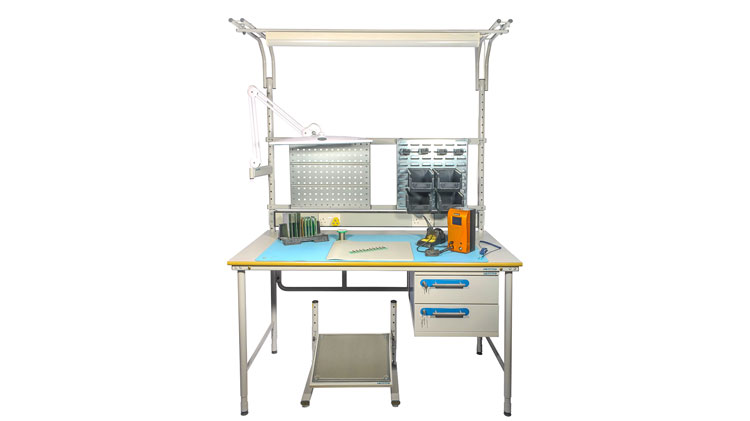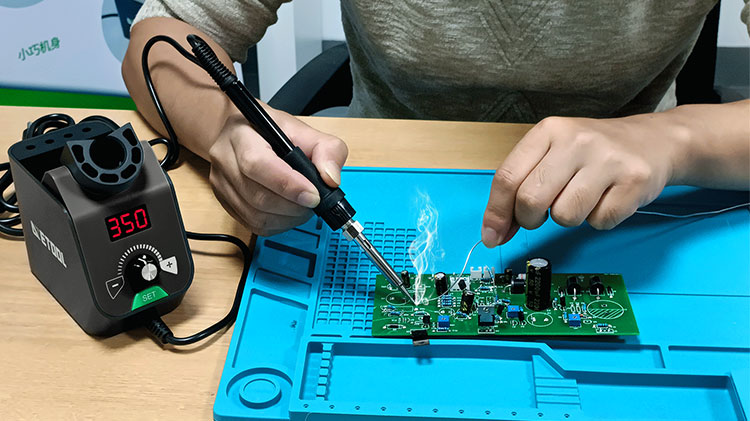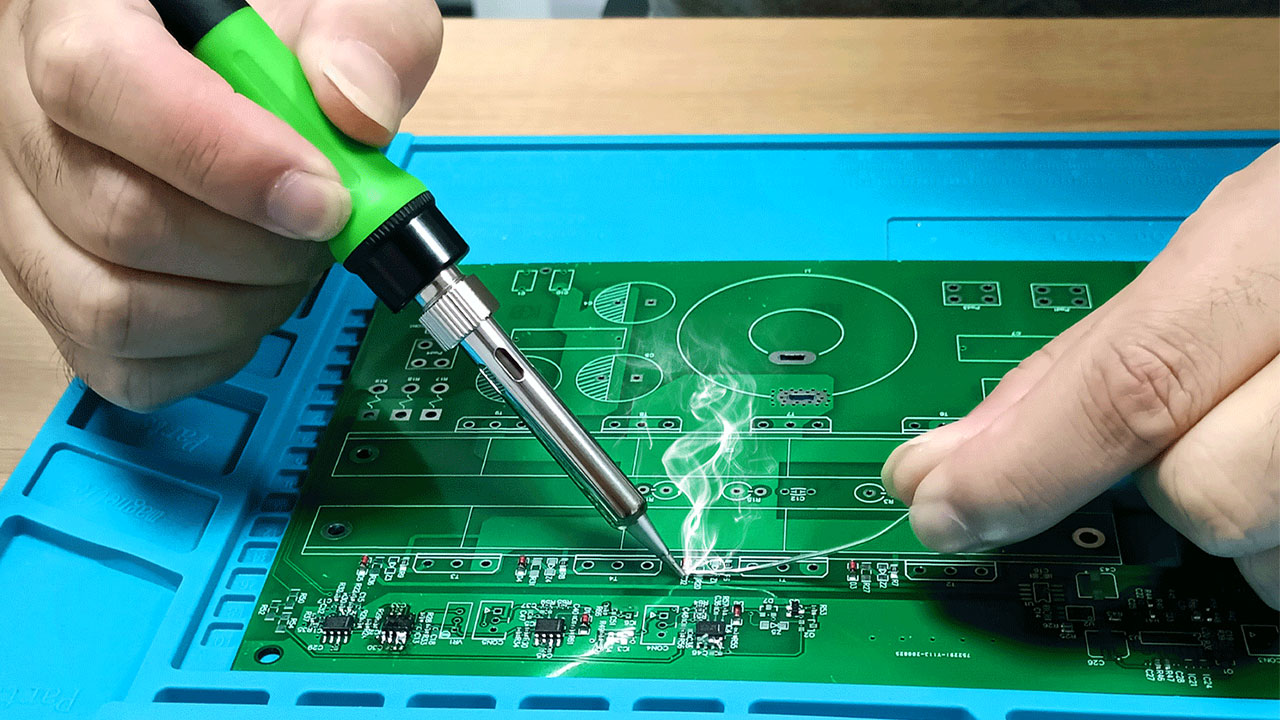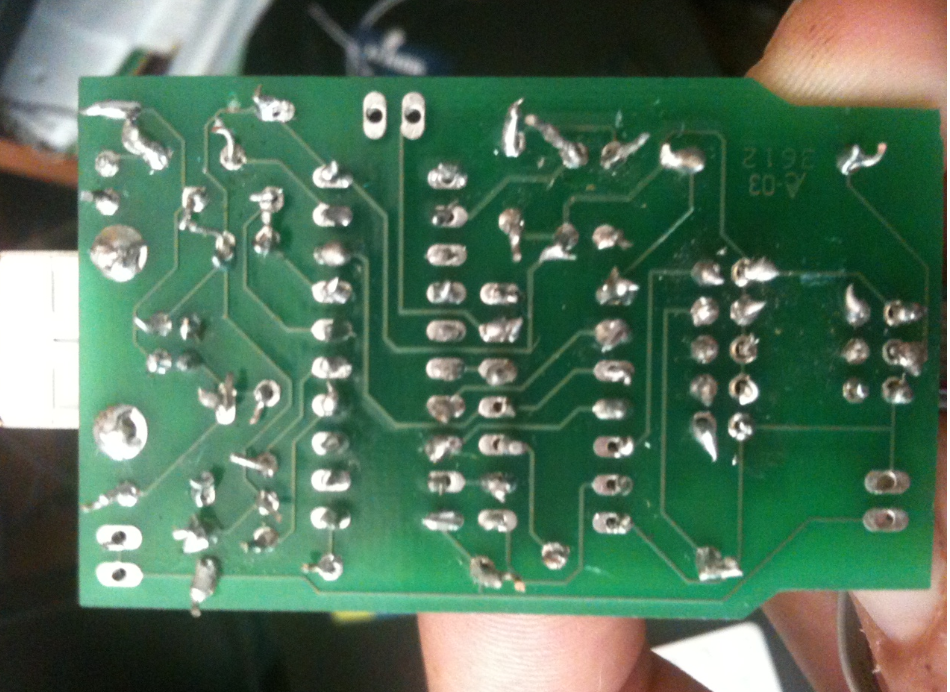Soldering is a welding process that involves the use of a soldering iron and solder to join two or more metal parts together. Soldering is commonly used in electronics, jewelry making, plumbing, and other applications where a strong and durable joint is needed. The soldering process can be divided into six steps: preparation, heating, application, inspection, cleaning, and maintenance.
The first step of soldering is preparation, which involves preparing the metal parts, the tools and materials, and the work area for the soldering process. In this step, the metal parts are inspected for defects, such as cracks, dents, or deformations, and they are cleaned and dried to remove contaminants, such as oxide, dirt, grease, or oil. The tools and materials, such as the soldering iron, the solder, the flux, and the other accessories, are also prepared and checked for proper working order and condition. The work area is also prepared by providing adequate lighting, ventilation, and protection from the environment and by organizing the tools and materials in a convenient and accessible manner.

The second step of soldering is heating, which involves heating up the soldering iron and the metal parts to the right temperature for soldering. In this step, the soldering iron is turned on and adjusted to the right temperature according to the type of soldering project and the instructions provided by the manufacturer. The metal parts are also heated up, either by using the soldering iron directly or by using a heat gun, a torch, or another heating device, to reach the right temperature for soldering. The temperature of the soldering iron and the metal parts is important, as it determines the melting point and the flow of the solder, and it affects the strength and durability of the soldered joint.

The third step of soldering is the application, which involves applying the solder to the metal parts, where it melts and flows into the gaps and pores of the metal surfaces. In this step, the solder is prepared either by melting it in a soldering pot, feeding it through a soldering wire, or using a pre-made soldering paste, according to the type of soldering project and the instructions provided by the manufacturer. The solder is then applied to the metal parts by touching it directly to the metal parts, using a soldering iron or a soldering gun, or using a brush, a spatula, or another tool to spread it evenly and smoothly over the metal parts. The solder is then allowed to cool and solidify, forming a bond with the metal parts, and creating a mechanical and electrical connection between them.

The fourth soldering step is inspection, which involves inspecting the soldered joint to ensure that it is strong, durable, and free from defects. In this step, the soldered joint is examined visually, using a magnifying glass, a microscope, or another inspection tool, to look for signs of poor soldering, such as cold joints, excess solder, or voids. The soldered joint is also tested mechanically, using a probe, a test clip, or another testing device, to check its resistance, continuity, and performance and to ensure that it meets the specifications and requirements of the soldering project. The soldered joint is also inspected for environmental and safety hazards, such as fire, fumes, or electrical shock, and it is protected or repaired if necessary.
The fifth soldering step is cleaning, which involves cleaning the soldered joint and the tools and materials used in the soldering process. In this step, the soldered joint is cleaned and polished using a brush, a file, or another cleaning tool to remove excess solder, dirt, or debris and improve its appearance and performance. The soldered joint is also protected, using a coating, a tape, or another protective material, to prevent corrosion, oxidation, or contamination and to extend its life and reliability. The tools and materials are also cleaned using a cloth, a brush, or another cleaning tool, to remove solder, flux, or other residues and to prepare them for the next soldering project. Cleaning the soldered joint and the tools and materials is important, as it ensures that the soldering process is clean, safe, and efficient, reducing the risk of damage, failure, or waste.

The sixth and final soldering step is maintenance, which involves maintaining the soldered joint and the tools and materials used in the soldering process. In this step, the soldered joint is checked periodically, using the same inspection and testing methods as in the inspection step, to ensure that it is still strong, durable, and free from defects. The soldered joint is also repaired or replaced, if necessary, using the same soldering process and tools and materials as in the preparation, heating, application, and inspection steps to restore its performance and reliability. The tools and materials are also maintained, using the same cleaning and protective methods as in the cleaning step, to extend their life and performance and prepare them for the next soldering project. The maintenance of the soldered joint and the tools and materials is important, as it ensures that the soldering process is reliable, durable, and cost-effective, reducing the risk of downtime, failure, or waste.
In conclusion, soldering can be divided into six steps: preparation, heating, application, inspection, cleaning, and maintenance. Each soldering step is important, as it contributes to the success, quality, and efficiency of the soldering process and ensures that the soldered joint is strong, durable, and reliable. By following these soldering steps, the solderer can create a strong and durable soldered joint and become a skilled and confident solderer.
Contact: Mr. Li
Phone: (0086) 138 24254 321
E-mail: atetool@atetool.com.cn
Add: 5F, 1-2# Building, Tongfuyu Industrial Zone, Aiqun Rd, Shiyan Subdistrict, Bao'an, Shenzhen, 518108, China